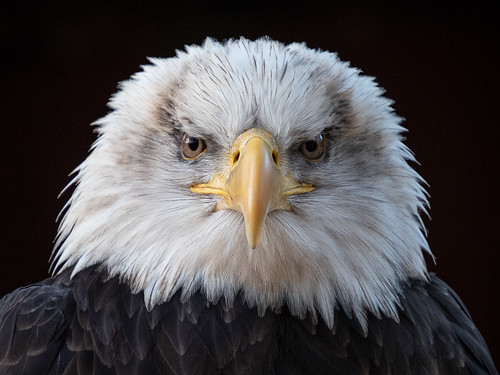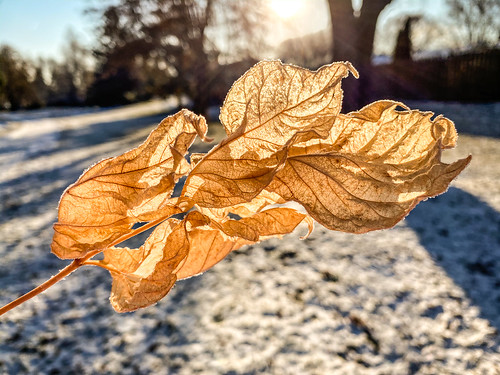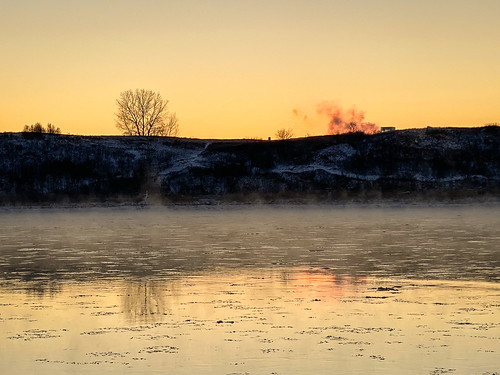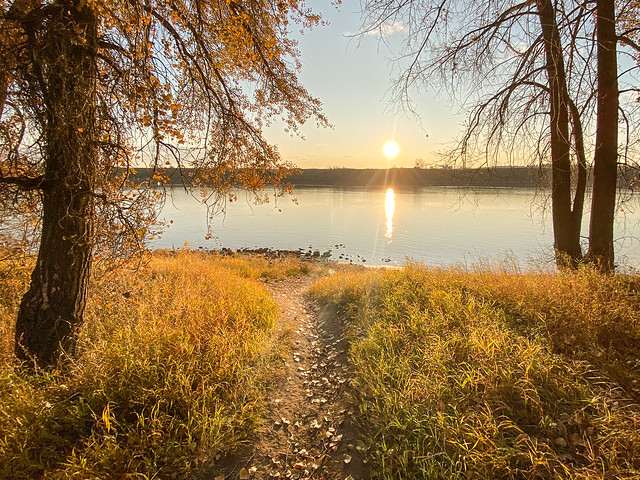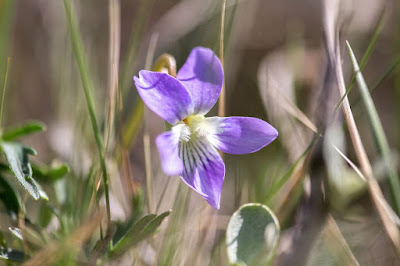Tuesday, 26 November 2019
EcoSask News, November 26, 2019
Upcoming Events
Falconry, Nov. 28 (Saskatoon)
Paddy Thompson will discuss the amazing world of falconry at 7 pm, Nov. 28.
Buy Nothing Day, Nov. 29 (worldwide)
Climate strikes being planned world-wide for November 29 coincide with Buy Nothing Day, an international day of protest against consumerism.
Nature Travels in Iceland, Nov. 30 (Fort Qu’Appelle)
Ed Rodger will speak on his nature travels in Iceland at the 7 pm, Nov. 30, meeting of the Fort Qu’Appelle Nature Society in the Fort Qu’Appelle Train Station.
Grasslands: A Hidden Wilderness, Dec. 2 (Regina)
Join Nature Regina and the Royal Saskatchewan Museum to watch the documentary Grasslands: A Hidden Wilderness followed by a question and answer at 7:30 pm, Dec. 2.
Future of Parks, Dec. 3 (Saskatoon)
Mitchell Silver, Commissioner, New York Department of Parks, will talk on the Future of Parks and Public Space: What’s Next? at 7 pm, Dec. 3.
Civilization Critical, Dec. 4 (Saskatoon)
Darrin Qualman will speak about his book, Civilization Critical, at the Nov. 6 breakfast meeting of the SK Energy Management Task Force.
Innercity Clothing Swap, Dec. 5 (Saskatoon)
There will be an Innercity Clothing Swap from 6-10 pm, Dec. 5, at The Underground Café.
Saskatoon Nature Society Field Trips
Dec. 1, 2-4 pm – Winter Wildlife Tracking in the Small Swale
Dec. 7, 9 am-5 pm – Gardiner Dam Birding
Everyone is welcome. Check the Saskatoon Nature Society’s website for full details and updated information.
A full list of upcoming events can be found on the EcoFriendly Sask Calendar
Saskatoon Freeway & the Swales
If you love nature and want to protect it, you’re encouraged to attend the Saskatoon Freeway public consultations on Nov. 26 and 27. Here’s why:
1. The decisions around Phase 1 will affect the freeway’s route through both the Small Swale and the Northeast Swale;
2. The environmental data for the area crossed by Phase 1 is not complete, but Highways is making decisions about the specific route and design;
3. Decisions about the route will affect Wanuskewin's natural and cultural landscape which might affect its application for UNESCO Heritage status;
4. The route is being decided before having a full consultation with affected landowners; and
5. Highways says it is consulting with groups such as the Northeast Swale Watchers but has also declared that the route is non-negotiable.
Trees
Local people are concerned that the proposed logging of more than 7,660 acres of forest in Meadow Lake Provincial Park will do more harm than good.
Myles MacDonald, Paddockwood, was arrested trying to prevent municipal workers from chopping down all the trees and bushes that provide wildlife habitat in the road allowance.
“It’s often argued that logging trees killed by insects or diseases is beneficial for forests—but evidence is mounting that it causes long-term ecological disruption.”
In Other News
The risks of farming over top of pipelines: crop degradation and lower yields, leaks and ruptures, sinkholes, junk pipes never removed.
Canada has the third-highest per capita greenhouse gas emissions from healthcare in the world, with healthcare accounting for approximately 4% of the country’s total emissions.
“Redesigning parks to increase the naturalness, ecological function and diversity of active and passive recreational uses . . . can support higher-density urban areas.”
Noise, especially in urban areas, can have a very negative impact on wildlife.
Insect deaths can be cut by switching off unnecessary lights.
Our home delivery habits are reshaping the world: enormous warehouses, packaging that accounts for 30% of the US’s solid waste, and increased traffic.
Wolverines have vast home ranges and always take the shortest route, whether it’s straight up a mountain or a 50-degree ice pitch.
EcoSask News is a weekly round-up of local news and events. Email us if you have items you would like us to include.
You can follow EcoFriendly Sask by liking us on Facebook, following us on Twitter, or by email (top right corner).
Labels:
Agriculture,
Birds,
Books,
Economy,
Films,
Forest,
Fort Qu'Appelle,
Grasslands,
Light,
Noise,
Oil,
Parks,
Regina,
Saskatoon,
Swale,
Transportation,
Waste,
Wildlife
Tuesday, 19 November 2019
EcoSask News, November 19, 2019
Upcoming Events
Great Blue Heron, Nov. 19 (Prince Albert)
Sonnet McGuire will share information about Great Blue Heron Provincial Park at the 7 pm, Nov. 19, meeting of Nature Prince Albert.
Multiple Species Management, Nov. 21 (Eastend)
Attend a multiple species management workshop from 1:30-5:30 pm as well as a conservation appreciation dinner at 6 pm in Eastend, Nov. 21.
Green Infrastructure Strategy, Nov. 21 (Saskatoon)
The City of Saskatoon is inviting public input into its green infrastructure strategy from 4-7 pm, Nov. 21, with presentations at 4 and 5:30 pm.
Palaeontological Finds, Nov. 22 (Moose Jaw)
Ryan McKellar will discuss some of the exciting new discoveries made by Royal Saskatchewan Museum palaentologists this summer at the Moose Jaw Nature Society meeting from 6:30-8:30 pm, Nov. 22.
Saskatoon Freeway, Nov. 26 & 27 (Saskatoon)
The Saskatoon Freeway Functional Planning Study team is hosting come-and-go public information sessions from 4-8 pm on Nov. 26 and 27. The decisions made at this stage will affect the crossing through the Northeast Swale.
EnviroCollective, Nov. 27 (Regina)
EnviroCollective Regina is meeting and celebrating its one-year anniversary at 7 pm, Nov. 27.
Surplus: Terrorized into being Consumers, Nov. 27 (Regina)
Surplus, a film about consumerism, will be shown at 6:30 pm, Nov. 27, in Regina.
50th Birthday Party, Nov. 27 (Regina)
Everyone is welcome at SaskOutdoors’ come-and-go 50th birthday party at 5 pm, Nov. 27.
Beginner Bird Id, Nov. 27 (Saskatoon)
The Saskatchewan Breeding Bird Atlas is hosting a free bird identification workshop from 7-9 pm, Nov. 27.
Conservation Priorities, Nov. 28 (Lumsden)
The Lumsden Valley Community Association is hosting a talk on Conservation Priorities in Southern Saskatchewan: a Nature Conservancy of Canada Perspective at 7 pm, Nov. 28, in the Lumsden High School band room (adults $2, students free).
Global Climate Strike, Nov. 29 (Regina, Saskatoon)
There will be global climate strikes in both Regina (10:30 am-1:30 pm) and Saskatoon (12-2 pm) on Nov. 29.
Looking Ahead
Youth Forum, Nov. 30 (Regina)
EnviroCollective, in conjunction with RPIRG and the David Suzuki Foundation, is hosting a youth community forum on Regina's energy future from 1-4 pm, Nov. 30. Free but register to attend.
Winter Wildlife Tracking, Dec. 1 (Saskatoon)
Learn to identify animal tracks in the Small Swale from 2-4 pm, Dec. 1.
SaskOutdoors Winter Camp, Dec. 14-15 (PANP)
Join SaskOutdoors for their annual winter camp, Dec. 14-15.
A full list of upcoming events can be found on the EcoFriendly Sask Calendar
In the News
Climate Justice Saskatoon is urging Saskatoon residents to contact their City Councillor and Council prior to budget deliberations Nov. 25-27 to show support for funding the City’s Low Emissions Community Plan.
Students and researchers at the University of Regina have mapped 14,958 oil and gas industry spills between 2000 and 2018.
“Opposing ill-advised [infrastructure] projects is not at all ‘anti-development’ but rather pro-smart development. All nations have finite assets available for construction and maintenance of infrastructure.”
The myths surrounding waste reduction – the circular economy, consumer responsibility, market efficiency, technical solutions.
BC leads the way with climate change legislation that could serve as a blueprint for the federal government.
“A good zoo should have an absolute focus on animal welfare, on conservation and be absolutely focusing on their own environmental sustainability practices.”
Opponents of light pollution in the Netherlands are urging government agencies and companies to turn off the lights so people can rediscover the beauty of darkness.
This office building can be dismantled, creating no waste as its components and materials can be reused.
EcoSask News is a weekly round-up of local news and events. Email us if you have items you would like us to include.
You can follow EcoFriendly Sask by liking us on Facebook, following us on Twitter, or by email (top right corner).
Labels:
Advocacy,
Birds,
Camping,
Construction,
Eastend,
Films,
Lighting,
Lumsden,
Moose Jaw,
Oil,
Prince Albert,
Regina,
Saskatoon,
Swale,
Transportation,
Urban Planning,
Wildlife,
Youth,
Zoo
Sunday, 17 November 2019
Claire Bullaro: Zoos are for Education
As a child growing up in Philadelphia, Claire Bullaro was always interested in animals and had lots of pets. “Our family had hamsters, dogs, fish, and budgies, but the snake was mine alone.” One of her fondest memories is of entering a competition on the radio and winning a free entry to the Philadelphia Zoo. Claire’s love of animals and zoos has remained a constant throughout her life. Claire’s husband shared her interest in animals and, whenever the family travelled, they would visit the local zoo.
Claire’s interest in zoos extends beyond personal interest. With a Bachelor’s degree in Biology and a Master’s degree in Zoology, she has always been keenly interested in education and conservation. “Zoos should be for educating people about animals,” she explains. “Otherwise you’re just torturing animals for human entertainment when they could be in the wild.”
Saskatoon Zoo Society
Shortly after Claire and her family moved to Saskatoon, the local zoo, which had been very small, obtained all the animals from the Golden Gate Animal Farm when it closed. Claire heard that some local people were planning to start a non-profit zoo society. Claire’s husband joined the board initially but Claire soon followed once their children were a bit older. She has been on the board almost non-stop for the past 40 years and has served as president three times.
The Saskatoon Zoo Society’s role has evolved over the years as has its relationship with the zoo’s management team. In the early days, the Society wasn’t very active. The volunteers would meet with classes and youth groups and share information about the zoo animals. “We had no facility,” Claire explains. “We would meet up in the parking lot and take them on a tour of the zoo.” Jerry Haigh, a wildlife vet who had worked in Africa, was another of the volunteers and he was able to provide some artifacts to help stimulate discussion.
In the mid-1980s, a change in management led to a much more active role for the Saskatoon Zoo Society. Management asked the Zoo Society to start up a gift shop and food concession and Society members could enter the zoo for free. The City also provided some funding for educational programs.
With an annual budget of $400-500,000, the Society was in a position to hire staff and expand their educational program. They hired three educators, all with teaching degrees. The current educators have all been with the Zoo Society for over 20 years. “They’re terrific,” Claire says. “They’re amazing with the kids and full of ideas. I just wish we had enough money to pay them based on their education and years of experience.”
The Zoo Society’s educational programming has proven to be extremely popular. “When word gets out that someone will take you on a tour and talk about things, the requests start accumulating,” Claire says. Some programs, such as the summer camps, are fully booked on the first day of registration. Claire is delighted with the response. “I love the idea of educating people,” she says. “Reaching kids is really important and often they pass the information along to adults.”
Claire’s Dream Zoo
Claire’s many years of experience have left her with a clear idea of what she would like to see in a zoo. Rather than trying to house as many exotic species as possible, Claire believes the emphasis should be on local animals. “We had a group of kids visit the zoo. They lived on a reserve, but they had never seen a live moose,” Claire says. “There are city kids who’ve never seen pronghorn, or great-horned owls, or eagles. The grasslands of the Great Plains are the most degraded habitat in North America. This is something you can teach people about in a zoo.”
Good signage, Claire believes, is key. “You need to do more than display the name of the animal,” Claire says. “You want to give visitors a sense of what the animals is like in its real habitat, how it interacts with other animals, and its importance to the ecosystem.” She uses prairie dogs as an example, noting that by eating the local grasses they help to reseed the prairies and their tunnels provide a home and shelter for snakes, burrowing owls, and black-footed ferrets (now extinct in Saskatchewan). Comparisons with animals that live in similar ecosystems are also valuable. “It would be cool to compare dingoes with coyotes,” Claire says.
The Zoo Society’s current educational program extends from pre-school to high school. In a dream zoo, Claire would like to see weekend and adult programming added to the mix. A group of educational animals that were used to being handled and didn’t need to be in quarantine would be extremely valuable so that children could actually see and interact with the animals.
Ideally, the educational animals would include one or two examples each of birds, reptiles, insects, and mammals. “It would be important to go beyond animals that children can see in a pet store,” Claire says. “It would be wonderful to have Saskatchewan species, such as a skunk, a burrowing owl, and a raptor.”
Claire’s dream zoo would not only talk about conservation, it would also undertake conservation projects, similar to the work being done at other zoos to help restore black-footed ferrets, swift fox, and amphibians to the wild.
Giving Back to Her Community
Claire Bullaro’s activities extend beyond the Saskatoon Zoo Society. She is also on the board of Living Sky Wildlife Rehabilitation, Saskatoon Parrot Rescue, Friends of the Forestry Farm House, and the Saskatoon Heritage Society – not to mention maintaining the Saskatoon Nature Society’s mailing list and membership in a church committee.
Photo Credits: with parrot, Claire Bullaro; group photos, Greg Fenty
Further Information
Zoos in the 21st Century
Profile of Saskatoon Zoo Society, 2011
Tuesday, 12 November 2019
EcoSask News, November 12, 2019
Upcoming Events
Wild Pigs, Nov. 13 (Val Marie)
Ryan Brook will present his current research on wild boars at 7 pm, Nov. 13, in Val Marie.
Guardians of the Grasslands, Nov. 14/19 (Regina, Saskatoon)
Attend a free screening of Guardians of the Grasslands followed by a panel discussion at 7 pm, Nov. 14, in Regina and at 7 pm, Nov. 19, in Saskatoon.
Canada’s Bees, Nov. 18 (Regina)
Cory Sheffield will share how Canada’s diversity of bees prepares for winter at the 7:30 pm, Nov. 18, meeting of Nature Regina.
Municipalities & Climate Change, Nov. 18 (Saskatoon)
As part of a national event, students at the University of Saskatchewan will be participating in a research-a-thon on municipalities and climate change from 11 am-4 pm, Nov. 18.
Making Clothes Last, Nov. 19 (Saskatoon)
Wesley United Church, as part of its Green Parenting series, is offering a workshop entitled Beyond Fast Fashion: A hands-on workshop on making clothes last from 7:30-9 pm, Nov. 19.
Low-Carbon Stories, Nov. 19 (Saskatoon)
Margret Asmuss will discuss what we can learn from five Saskatchewan communities, businesses and farms that work to reduce their greenhouse gas emissions while benefitting their bottom line at 7 pm, Nov. 19.
Prairie Ponds, Nov. 21 (webinar)
There will be a noon-hour webinar on prairie pond abundance and the breeding success of tree swallows on Nov. 21.
Antarctic Icefish, Nov. 21 (Saskatoon)
Brian Eames will discuss his Antarctic icefish expedition at the 7:30 pm, Nov. 21, meeting of the Saskatoon Nature Society.
A full list of upcoming events can be found on the EcoFriendly Sask Calendar
In the News
Mark Dallyn, Healing Haven Wildlife Rescue, questions why the provincial government has issued a moratorium on large animal rehabilitation.
The Citizens Environmental Alliance wants to make agricultural drainage more environmentally friendly.
Speed kills – and yet Saskatoon’s drivers and city councilors want to raise the speed limit on a road running through the ecologically-sensitive Northeast Swale.
Saskatoon’s Innovation Place is encouraging its tenants to compost organic waste.
Changing climate patterns are as important as habitat loss for birds on the Canadian Prairies, while aquatic insects are more sensitive to land use and water chemistry.
Is green housing really green when you take into consideration the cost of manufacturing and transporting construction materials and fixtures?
Five alternate economic models – from rewarding institutions that benefit the common good to reducing consumerism.
Oil industry lobbyists are developing close, long-term relationships with federal bureaucrats – and conducting 5 times more lobbying than environmental organizations.
Sweden is using storytelling to help the public understand what a sustainable future could look like.
EcoSask News is a weekly round-up of local news and events. Email us if you have items you would like us to include.
You can follow EcoFriendly Sask by liking us on Facebook, following us on Twitter, or by email (top right corner).
Labels:
Agriculture,
Birds,
Construction,
Economy,
Government,
Insects,
Oil,
Prairie,
Regina,
Saskatoon,
Swale,
Transportation,
Val Marie,
Waste,
Wetlands,
Wildlife,
Wildlife Rehab
Tuesday, 5 November 2019
EcoSask News, November 5, 2019
Upcoming Events
Passive House Days, Nov. 8 & 9 (Regina)
Visit the Jameson High Performance House near White City, Nov. 8 & 9, as part of International Passive House Days.
Bird Feeding Workshop, Nov. 10 (Moose Jaw)
Make bird feeders and bird treats at a bird feeding workshop hosted by the Moose Jaw Nature Society from 2-5 pm, Nov. 10.
Winter Eyes, Nov. 12 (Prince Albert)
Andrea Nelson will uncover the curiosities of the early winter season at 7 pm, Nov. 12, in Prince Albert.
Electronic Recycling, Nov. 13 (Regina)
Find out how the Electronic Recycling Association is reducing waste and reusing unwanted electronic equipment at noon, Nov. 13.
Repair Café, Nov. 16 (Prince Albert)
Celebrate and share maintenance and repair skills from 1-4 pm, Nov. 16, at Repair Café Prince Albert.
Looking Ahead
Beginner Bird Id, Nov. 27 (Saskatoon)
The Saskatchewan Breeding Bird Atlas is hosting a free bird identification workshop from 7-9 pm, Nov. 27.
Winter Wildlife Tracking, Dec. 1 (Saskatoon)
Learn to identify animal tracks in the Small Swale with the Saskatoon Nature Society and Meewasin from 2-4 pm, Dec. 1.
Saskatoon Nature Society Field Trips
Nov. 10, 1-5 pm – Pike Lake Birding
Nov. 24, 2-3 pm – Pre-Grey Cup Birding
Everyone is welcome. Check the Saskatoon Nature Society’s website for full details and updated information.
A full list of upcoming events can be found on the EcoFriendly Sask Calendar
In the News
Congratulations to Candace Savage, winner of the 2019 Meewasin Conservation Award – so well deserved!
The provincial government is asking for feedback on a proposal to include a Forest Inventory Chapter in the Saskatchewan Environmental Code. The Environmental Code addition will govern forest inventories created in preparation of forest management plans, pursuant to The Forest Resources Management Act. Feedback must be submitted by Dec. 16, 2019.
“For producers grazing cattle, beaver activity is part of an ecosystem chain that aids the production of lush, high-nutrient forage in riparian areas and uplands.”
Always-on inactive electrical devices cost the average household $165/year and waste approximately 500 megawatts of power.
The rarest, most endangered species get the most attention—but common species need help, too.
Generating electricity from fossil fuels is a water-intensive process. Water savings could be achieved by switching to solar- and wind-generated electricity.
Tips on how to write a petition headline that will attract signatures.
The 2020 Olympic medals will be made from 80,000 tons of recycled mobile phones and electronics.
EcoSask News is a weekly round-up of local news and events. Email us if you have items you would like us to include.
You can follow EcoFriendly Sask by liking us on Facebook, following us on Twitter, or by email (top right corner).
Sunday, 3 November 2019
Nature through the Camera Lens
Meghan Mickelson is an active member of Saskatoon’s Northeast Swale Watchers and the Endangered Grasslands Alliance. She combines photography with citizen science to share her love of the prairie grasslands.
Meghan grew up on the edge of Saskatoon with grassland and a field full of ground squirrels behind her home. She and her friends would ride their bikes to the Northeast Swale. “I didn’t know it was the Swale,” Meghan says. “It was just a place to go clear my head and ground myself.” When Meghan returned to Saskatoon after 10 years on Vancouver Island, she went looking for the Swale, this time with camera in hand.
Meghan bought her first camera when she was 10 years old. Her first photographs were of her cat, her backyard – whatever was around. As she grew older, she inherited an old film camera from her mother, giving her an opportunity to improve her photography skills and become a more adept photographer.
As she walked around Saskatoon’s natural areas, Meghan’s interest shifted to documenting nature. Her first love was flowers, but then she got a zoom lens and started taking photographs of birds. And the more photographs she took, the more she wanted to know about the species she was photographing. “I went on a bioblitz at the Swale and learned how to identify crowfoot violets,” Meghan explains. “Next, I bought identification books and, after participating in a bioblitz organized by the Nature Conservancy of Canada, I started using iNaturalist.”
Over time, Meghan began using her photography skills to document the species in a particular area. “By going every week, you see how an area evolves,” she says. “I’ve been able to give my photography another purpose by using it for citizen science.” Meghan hopes that her photographs will help inform others and contribute to the conservation of Saskatoon’s natural places.
Recently, she was able to assist the Meewasin Valley Authority in documenting the species that can be found in the 500-metre swathe that will be destroyed when the proposed Saskatoon Freeway is constructed through the Small Swale. “I don’t think people understand the impact the highway will have on the area,” Meghan says. “It’s sight and sound and light. McOrmond Road runs through the Swale and it’s so loud. How do animals listen to that all day long?”
Meghan’s advocacy efforts have expanded beyond photography. She and a few other people were concerned about the lack of legal protection for the Swale. Often groups are hesitant to speak up and take action because they risk losing funding or impacting existing relationships. The Endangered Grasslands Alliance was formed to fill the gap by lobbying government on issues such as the Saskatoon Freeway. Their website urges the public to sign a letter of concern, and they are in the process of collecting signatures for a petition to be delivered to the provincial legislature. Although collecting signatures for a paper petition is a labour-intensive task, Meghan says it’s the only format recognized by the legislature and one of the few ways we can hold decision-makers to account.
The proposed Saskatoon Freeway will be located within 2 kilometres of the North Commuter Parkway and Bridge. It will cut through both the Northeast Swale and the Small Swale, which are home to numerous threatened, endangered, and at-risk species, such as the loggerhead shrike, northern leopard frog, American badger, plains rough fescue, crowfoot violet, and recently discovered marsh felwort. The freeway will also run through the Swale’s largest water body. “It’s heartbreaking to look out at this body of water and know it won’t be there in the future,” Meghan says.
Another grasslands advocate is Warrick Baijius, a geographer and PhD candidate at the University of Saskatchewan. Some of his research is playing an important role in informing the Endangered Grassland Alliance’s advocacy work. Although planning for a perimeter highway began in 1992, Warrick’s research indicates that environmental concerns weren’t even considered until 2004:
"Even then, there was no discussion of moving the proposed corridor, only of tweaking the location and type of interchanges. These decisions were largely driven by efficiency in traffic models, with marginal consideration for environmental impacts. Furthermore, previous stakeholder consultations focused on (at the time) rural landowners, and even the environmental concerns raised by residents were merely noted but not meaningfully addressed.
"A lot has changed since the original traffic modelling, stakeholder consultations, and public engagement. Now the Freeway will cut through publicly-owned city lands, impacting green infrastructure that the city, province, and ultimately tax payers have funded and continue to fund. The Saskatoon projected in decades-old transportation planning is not the Saskatoon of today, and neither are the residents. Results from the original public engagements are not necessarily representative of the current social values of — and landowner interests in — the Swales. There has been no serious discussion about the implications of climate change, biodiversity, or conservation in any of the studies to this point."
The Saskatchewan branch of the Canadian Parks and Wilderness Society has thrown its support behind the work of the Northeast Swale Watchers and the Endangered Grasslands Alliance, calling on the Ministry of Highways to conduct a full environmental impact assessment of the proposed project. "With a lack of any detailed environmental assessment prior to determining the freeway's routing, CPAWS-SK is concerned decisions and endorsements are being made without the necessary information and without a complete and robust environmental assessment of the impact the Saskatoon Freeway could have," says Stewart Coles, Operations Manager for CPAWS-SK (CBC News article).
The Endangered Grasslands Alliance’s petition asks the provincial government to:
(1) suspend planning for the Saskatoon Freeway and development around the Swales until a regional cumulative effects assessment has been completed,
(2) update the Wildlife Act and expand the list of wild species protected by Provincial regulation,
(3) recognize the Swales as important ecological habitat and designate them as protected areas, and
(4) ensure adequate long-term funding for research, management, and enforcement to protect the Swales for generations to come.
Each of us can lend our support to protection of the Northeast Swale and the Small Swale by signing the petition and sending a letter to our MLA.
Photo credits: Meghan Mickelson & Renny Grilz (photo of Meghan)
Subscribe to:
Posts (Atom)
